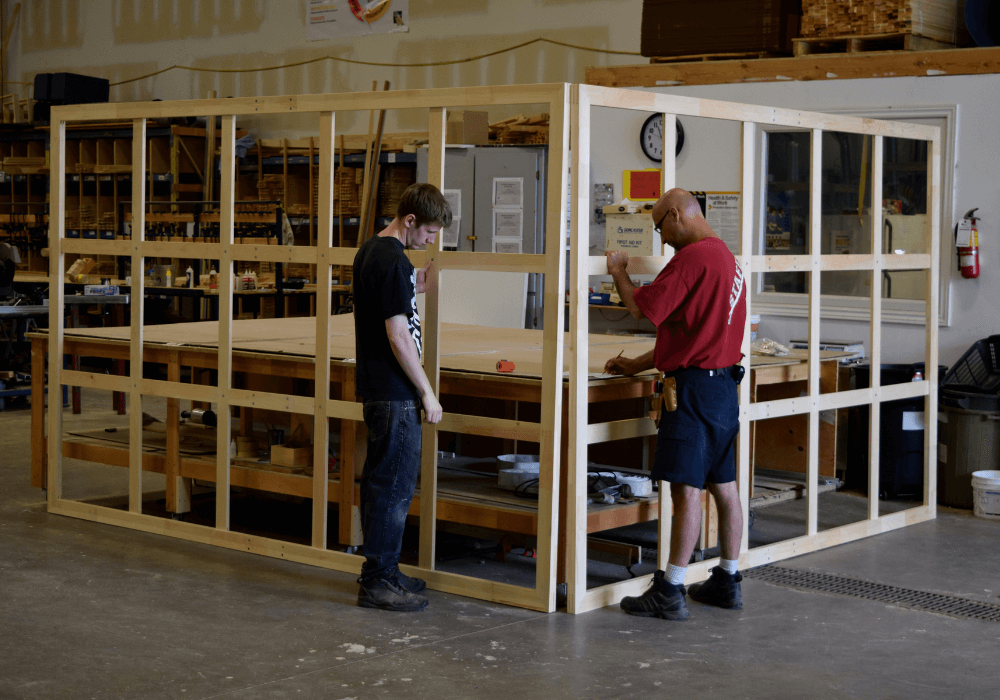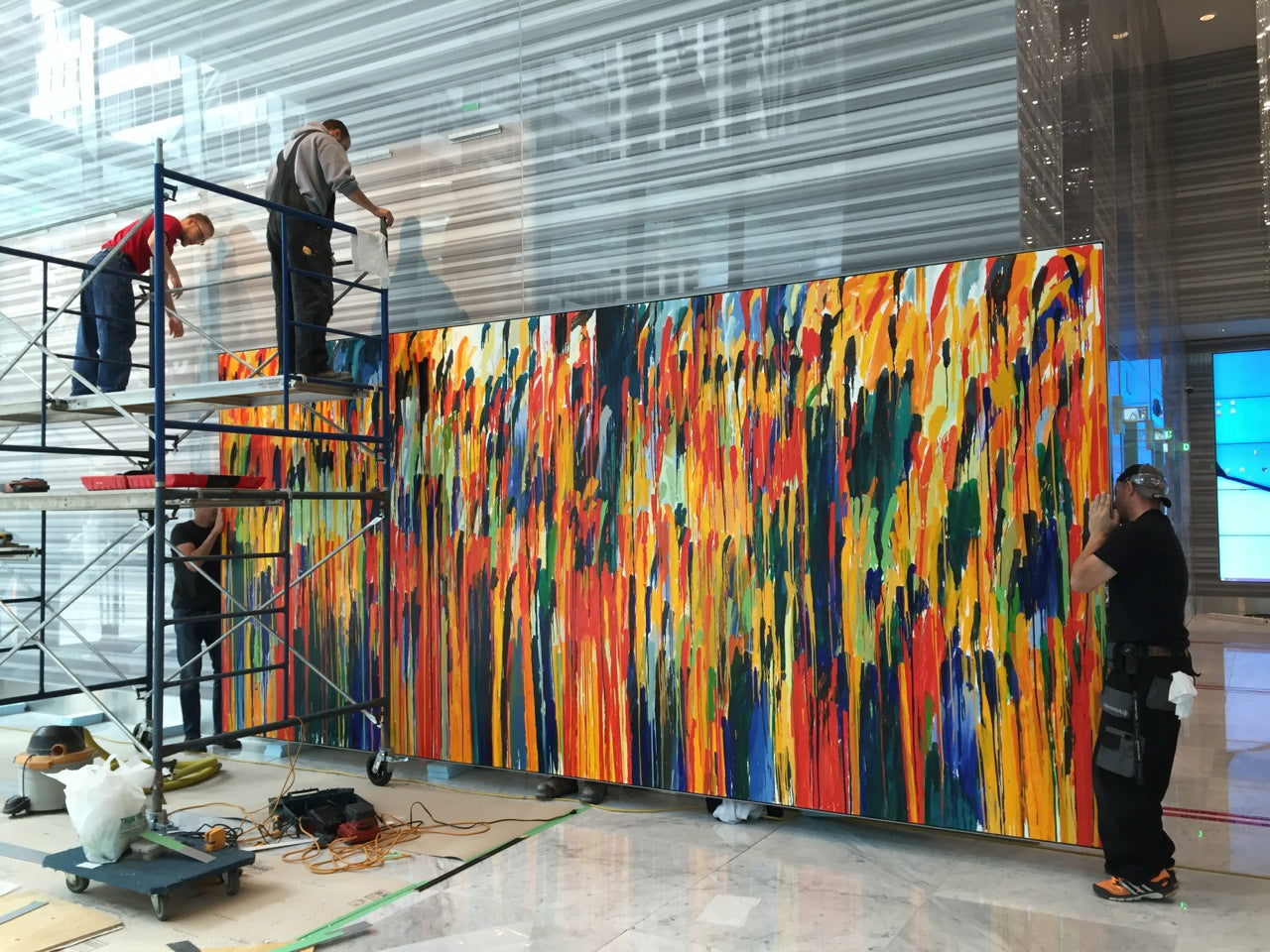The larger the canvas, the more important it is that your stretcher bars are light, strong and skillfully constructed. As you can imagine, it takes a few tweaks in the design to ensure that frames that may span 30 feet or more still provide a solid foundation that will support your work for years to come.
So just what should you be looking for in large or heavy duty frames? In this post, you’ll learn about the 7 stretcher bar design factors that make for strong, stable and sturdy frames for canvas art and prints of all sizes. Flip through these features here, or keep reading for more below.
WHY DOES DESIGN MATTER FOR LARGE STRETCHER FRAMES?
Superior stretcher bar design provides the foundation needed to support and protect your canvas over its lifetime, through assembly, transportation and years of display.
Larger doesn’t necessarily mean more complicated, though. You should receive the detailed instructions, hardware and tools required for assembly, and a large stretcher frame (10’ x 20’) can come together in about one hour.
Seek out these design features for reliably strong frames:
1. EDGE-GLUED & FINGER-JOINTED CLEAR WHITE PINE
Widely used in window and door manufacturing, clear white pine offers random grain patterns that counteract any tendency to warp. Short lengths of clear pine are finger jointed and glued together for strong, straight bars.
2. LAMINATED LONG STRETCHER BARS
The longer a piece of solid wood, the greater the potential for bowing or twisting. The only reliable way to make stretcher bars longer than 8 feet is to laminate two or more lengths of wood together. They process of gluing and setting these laminated stretcher bars in clamped jigs produces strong, straight and stable bars for your larger projects.


A large custom blank canvas (8′ x 18′) made as a triptych, which is three canvases attached as one.
Your largest projects, those with thin frames, those in areas with large climatic variances (such as cold or tropical climates) and others in specific conditions might do better with an aluminum or hybrid wood-aluminum stretcher frame.
3. ROOM FOR A PROTECTIVE BACKING
An inward slope on the back of each heavy-duty frame allows for the installation of a protective backing, which is critical in protecting large works over time. The backing serves as a buffer to reduce the effects of climatic changes, atmospheric pollutants, and occasionally damage caused by mishandling.
4. DOUBLE TONGUE & GROOVE FRICTION JOINTS
Double tongue & groove friction-fit corner joints ensure strength where heavy duty frames are needed, while triple tongue & groove provides six fully keyable connections for extra heavy duty frames.
5. HEAVY DUTY CROSS-BRACES
You’ll need extra support, but not at the cost of the amount of clearance from the canvas. Pine braces of ¾” x 3” fit the bill.
6. FULLY KEYED BARS & BRACES
Large canvas is prone to sagging over time, making keyable corner and brace joints a must for retaining the required tension over the life of the piece.
7. FLUSH BOLTED SECTIONAL DESIGNS
Shipping stretchers over 8-feet in length presents unique challenges. Look for longer bars and braces are constructed of shorter sections bolted together at assembly, with flush mount connector bolts.
WANT TO LEARN MORE?
- Watch as a 7’ x 20’ canvas is stretched and installed (video)
- Explore heavy duty stretcher bar products and applications
- Request a quote for your custom sized or shaped frame
Tags: Large canvas Large Canvas art Filed Under: Art Supplies & Materials, Blog.







